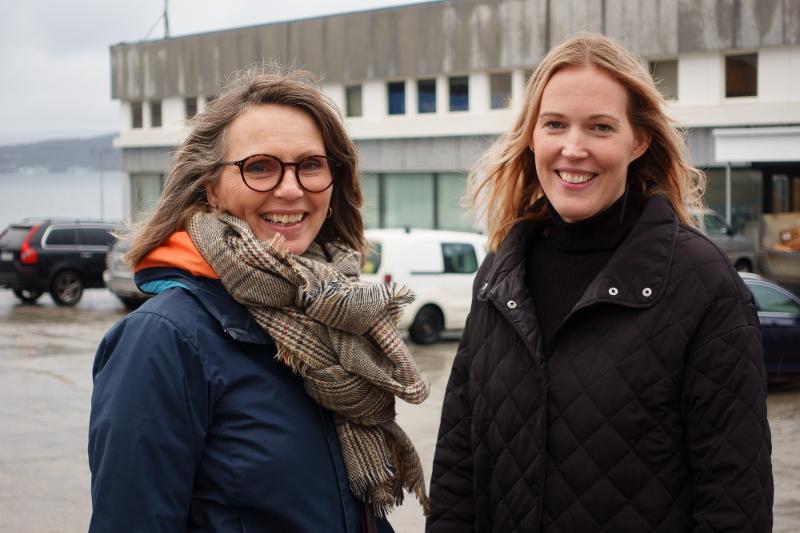The Norwegian introduction programme: Too much, too fast
There is too much that needs to be put in place in a short time, when refugees who come to Norway go through the introduction programme.
This is what Grethe Semmingsen and Stina Smetana-Svensen from Senja municipality in Northern Norway claim. They have both worked with the introduction programme as local supervisors for several years. Grethe since 2016 and Stina since 2011. On average, Senja receives around new 50 refugees each year.
Grethe and Stina now participate in the UiT project HealthIntro, that until 2025 will look at how the introduction programme for refugees works today - and how it can be improved.

Ambitious objectives
There was a new law in 2021, the Integration Act, which both Semmingsen and Smetana-Svensen say contains a lot of good things. The act introduced, among other things, that the refugees must receive both career guidance and parental guidance. Nevertheless, the supervisors still see challenges with the scheme and the way it works today.
- The act sets very ambitious goals have been for both us and the refugees, and there is a lot to be done in a short time when the refugees arrive. The time frames are too tight, Grethe Semmingsen says.
The refugees must have a place to live, and they must settle in a completely unknown local community without having a social network around them. They get further information about the integration process, and they sign “the integration contract” between themselves and the municipality - without knowing any Norwegian. They must also find their place in Norwegian society, without knowing how we organize it.
- At the start, there are many mandatory elements that the participants in the introduction must go through, and much of this is based on them understanding the Norwegian system, which can be very different from the one they come from. We sometimes ask ourselves: "Who are we doing this for?", Stina Smetana-Svensen elaborates.
The introduction program for refugees is designed as a joint scheme for people with very different backgrounds. It covers both those who have a university education and those who cannot read and write. It is also the same scheme for those who have very extensive trauma after war and abuse, and for those who fled before the crisis occurred.
- All of them must have had career guidance within three months and themselves help out with creating their own individual plan with goals and measures, Semmingsen continues.
Health challenges not taken enough into account
In the introduction programme, the refugees must learn Norwegian, learn to navigate Norwegian society, and ideally get a job or into further education as quickly as possible.
The new arrivals basically get a speedy start on their new life in Norway. Perhaps not enough consideration has been given to health-related challenges and trauma?
- The introduction programme does not take this problem and adaptation to the individual's situation enough account. We would like the possibility of grading their participation, as is the case in the rest of the Norwegian working life. After all, the introduction programme should try to mirror that working life, says Grethe Semmingsen.
As a result, refugees with health challenges can quickly run into trouble following the progression in the introduction programme, which is based on the refugees participating full-time, every day. And Semmingsen is supported from her colleague Stina Smetana-Svensen.
- Not many refugees drop out completely, but some of them have to put the introduction programme on hold. In some cases, it is simply not feasible to get through it, explains Smetana-Svensen.
Greater flexibility
When we ask Semmingsen and Smetana-Svensen how they would like the program to work five years from now, there are a couple of things they point to right away.
- We need a larger “time window" in the beginning, where we can spend more time on career guidance and individual planning. This way, the refugees will be able to really participate in the design of their own plan forward. We also want the opportunity for those who have extensive health challenges to participate on a graded basis, in other words simply that they can spend more time on the programme, explains Grethe Semmingsen.
But it is not only at the overall level that Semmingsen and Smetana-Svensen would like to see improvements. They clearly see the benefit in the refugees getting even better local help, as well as a work-oriented career for those who want it. The entire municipality must work together, across agencies and professions, to contribute to more refugees getting a job in Senja municipality. This particularly applies to participants who will not be taking further education.
- We are very grateful to all workplaces – both municipal and private – that accept participants in practice. It is extremely important to learn the language and to learn about Norwegian working life. It often contributes to good integration, they round off.
The introduction programme for refugees
The aim of the introduction programme is to give refugees basic skills in Norwegian, basic insight into Norwegian social life, and prepare them for work or education. The aim is to strengthen the opportunities for immigrants to participate in professional and social life, as well as to strengthen their financial independence.
source: www.regjeringen.no
Refugees in Senja
It varies how many refugees Senja municipality takes in each year. There was a peak in 2016-17, when the municipality welcomed around 75 people. In 2022, there has been a new peak, and Senja has received over 100 refugees so far this year. Most of them from Ukraine.
Senja municipality in HelseIntro
Senja is one of three northern Norwegian municipalities that participate in the research project HealthIntro at UiT. The municipality is represented by Grethe Semmingsen and Stina Smetana-Svensen from the refugee services in Senja. Additionnally, the refugees Hend Attar from Syria and Rahma Mohamad from Somalia participate as research assistants in the project.